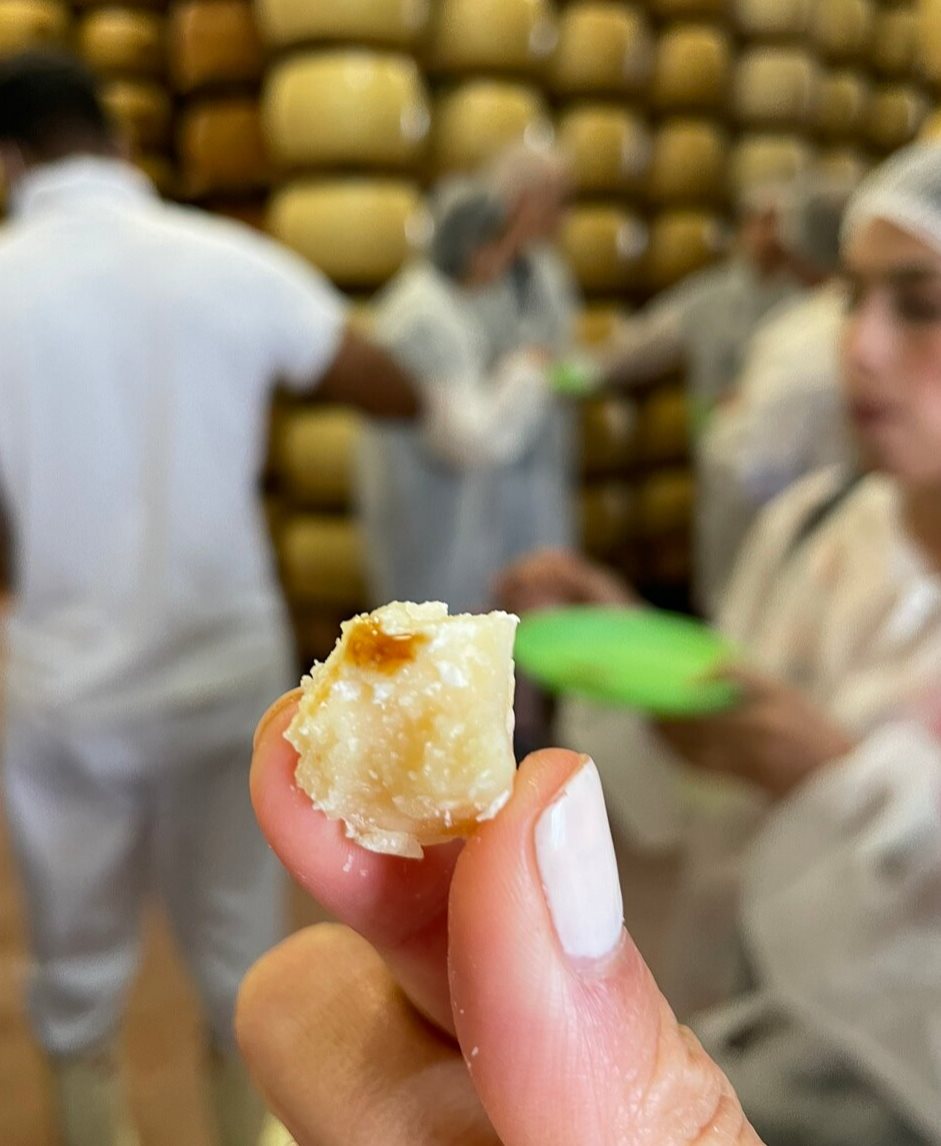
The Best attractions around Ferrara
Sep 11, 2020
The most beautiful memories we have are those that leave a mark on our passport. That’s why we are here, to show you the best places you can visit. If you are planning a trip to Italy, you should definitely know that besides big cities there are some other hidden gems which are worth to visit. Today we will take you to the heart of Ferrara. In 1995 the historic center interior was a dilapidated statue of the UNESCO World Heritage Site. Ferrara is a small town, in Emilia Romagna, that can be walked within a day on foot. If you are a first time visitor do not hesitate to read all this article and learn about the best attractions around this place.
Castle Estense

The ideal starting point for a visit to Ferrara is right next to Castello Estense. Indicative symbol of the city, although imposing in the historical center of Ferrara: it is one of the few examples of the castle most visible in Italy. Its construction starts in 1385 and is matt in color, with four large towers. The visit starts crossing the drawbridges and, once inside, it is possible to visit the prisons and the large frescoes rooms, used for games and court delights. Some rooms inside the Castle host the sample “Art for Art”, where the masterpieces of two artists from Ferrara, Giovanni Boldini and Filippo De Pisis, are exhibited.
Cathedral of Saint George

Near to the castle also included in the UNESCO World Heritage Site, you will find the Cathedral of Saint George, which was the city cathedral until the 12th century. Inside the Cathedral of Saint George there are works by Costanzo Catanio, Francesco Ferrari, Francesco Naselli , Domenico Canutiand Francesco Naselli . In the early 1100s, the façade was built with Romanesque style in the lower tier part. From the 1500s, the upward was made to a beautiful early Gothic loggia. Meanwhile, the pink and white marble bell tower is in the Renaissance style
National Archaeological Museum

The National Archaeological Museum of Ferrara, dating from the Renaissance period and traditionally attributed to Ludovico il Moro, is housed in the splendid Palazzo Costabili. The Palazzo is enriched by an Italian garden, with neat box hedges that draw the geometry of the space through the labyrinth and the gallery of roses. The rooms on the noble floor of the Palace house the findings from the necropolis of the city of Spina, one of the most important Etruscan cities of the Adriatic Sea, which developed between the 6th and 3rd centuries BC.
Diamond Palace Art Gallery

The Diamond Palace Gallery takes its name from the external ashlar of its walls, composed of eight thousand five hundred blocks of white marble with pink veins, and faceted with a point like the precious stone from which it takes its name: the diamond. Ideal center of the so-called “Addizione Erculea”, the palace, designed by Biagio Rossetti, was built on behalf of Sigismondo d’Este, brother of Duke Ercole I, starting in 1493, becoming one of the city residences of the Este. Ariosto, who enjoyed many privileges within the court, certainly had the opportunity to visit it. Since 1866, the Palazzo has housed, on the main floor, the National Art Gallery (Pinacoteca Nazionale) which boasts, among its masterpieces, some paintings by painters that Ariosto came to know at court such as Dosso Dossi, Garofalo, Bastianino.
National Pinacoteca Ferrara

In 1836 on the initiative of the Municipality of Ferrara it was established The Pinacoteca . The chosen site was the ‘Piano Nobile’ (noble floor) of Palazzo dei Diamanti where the large altarpieces from the churches, suppressed by Napoleon, and other paintings purchased from private city collections were exhibited to the public. In 1958 the Municipal Art Gallery was acquired by the State and thus became the National Art Gallery. Other works were gradually added to the original nucleus through deposits, donations, purchases by the State, and the Cassa di Risparmio di Ferrara which deposited its collection in the Pinacoteca so that a wider public can enjoy the artistic heritage of Ferrara.
Ferrara City Walls

Ferrara is still encircled by nine kilometers of fortification walls by the Renaissance period. The city is now UNESCO protected so thankfully they are the best preserved in all of Italy. This means that these walls and everything else inside will continue to be around for generations to come. The walls were primarily built in the 15th and 16th centuries. Near the boundaries of these walls, it is a city park with lush, green spaces, and paths for walking and cycling. The terrain is flat and the locals adopted this as a favored form of transport a long time ago, with around 25% of them using bikes.
Cathedral Museum

The Museum of the Ferrara Cathedral, located in the former Church of San Romano, is part of the system of the Civic Museums of Ancient Art and consists mainly of works originally exhibited in the Cathedral. Among these, the ancient organ doors stand out, depicting the Annunciation and St. George and the Dragon, an absolute masterpiece by Cosmè Tura, leader of the fifteenth-century Ferrara school; the thirteenth-century tiles from the Porta dei Mesi, lateral access to the Cathedral destroyed in the 1700s. In addition, tapestries, sculptures, illuminated antiphonaries, reliquaries, paintings, and various other works of art complete the interesting museum itinerary.
Museum of Risorgimento and Resistance

The Museum collects rare and precious testimonies of the participation of the Ferrara patriots in the Risorgimento epic. The documentary endowment ranges from the French presence in Ferrara to the period of the Carbonari uprisings and traces the events that preceded and followed the wars of independence. Additional materials summarize the reality of the First World War and the colonial wars. In the 1950s was added the section dedicated to the Resistance. Among the objects, we highlight the rich medal, weapons, banners, collection uniforms of the various periods, original finds from the destroyed papal fortress, and interesting specimens of flags of the Cispadana Republic and of the Bersaglieri del Po.
Church of San Cristoforo alla Certosa

In 1452 started the construction of a Carthusian monastery in Ferrara. The monastery, as required by the rule, had to rise in an isolated place, far from the city center. A few decades later, with the completion of the Erculean Addition desired by Ercole I d’Este, the monastic complex came to be inside the city walls. And it is precisely in this ideal center of gravity in Ferrara that the Church of San Cristoforo alla Certosa can still be admired today: the façade is unfinished, perhaps awaiting a marble coating while in the eighteenth century a monumental marble portal was added topped by the coat of arms of the order Carthusian.
Ferrara Botanical Gardens

The Botanical Garden of Ferrara was established in 1771. Now it has approximately 2000 different plants and to make it easy to identify them, there are divided into 5 thematic sections: Exotic Plants, Protected Flora, Themed Gardens, Useful Plants, Systematic. On the eastern side of the garden are located the greenhouses. They are subdivided into another structure based on the temperature they need in their environment, the cold greenhouse, temperate greenhouse, and the hot greenhouse. The Botanical Garden of Ferrara, every year prepares an “Index Seminum”. This is a catalog of seeds and spores, available for exchange with over 250 Italian and foreign institutions.
Most Instagrammable places in Ferrara
Ferrara, is an unmissable stop for all those who love art, culture, nature, and good food, but we want to show you some of the best spots to take the perfect picture. Consider the places below:
- Estenese Castle
- Ferrara Cathedral
- Diamond Palace Art Gallery
 Spanish
Spanish French
French German
German





